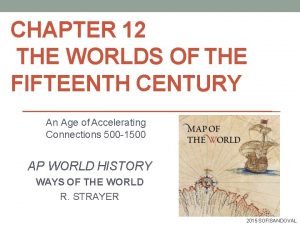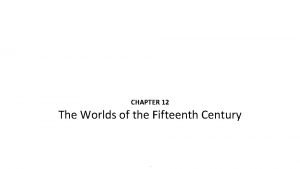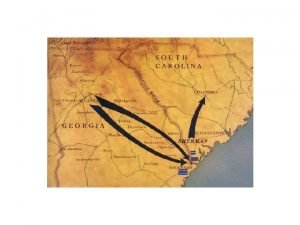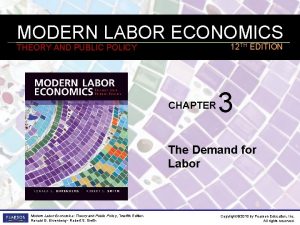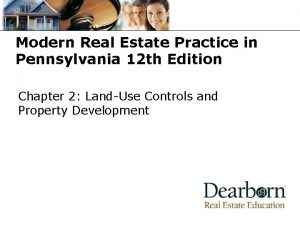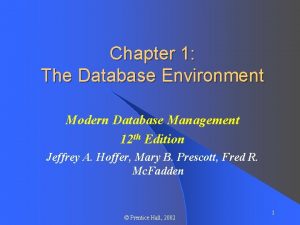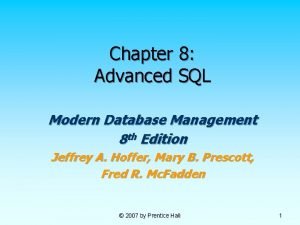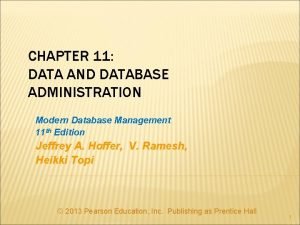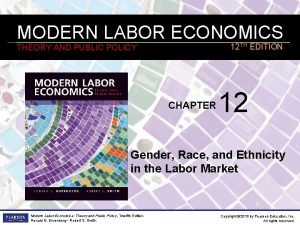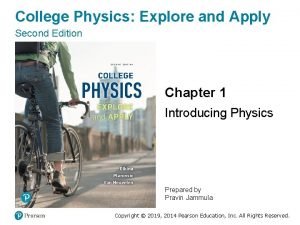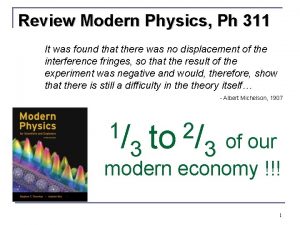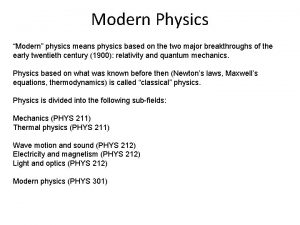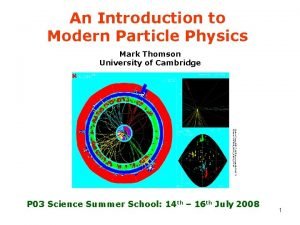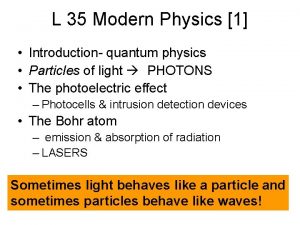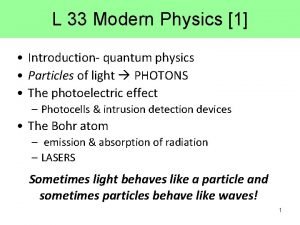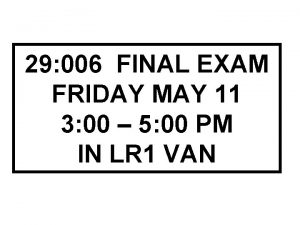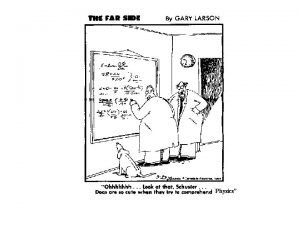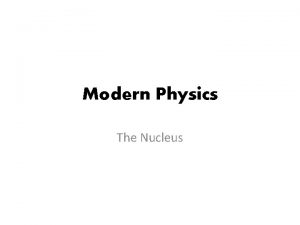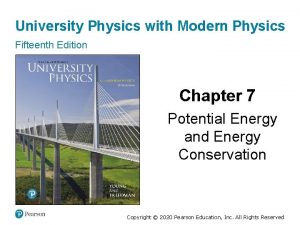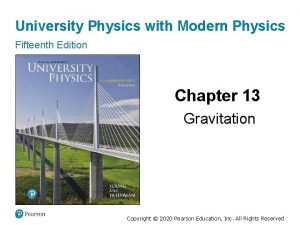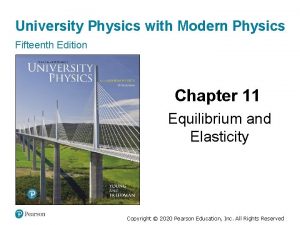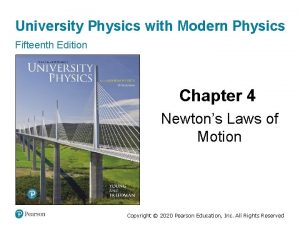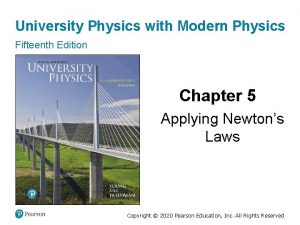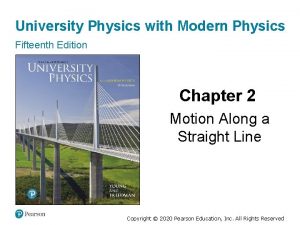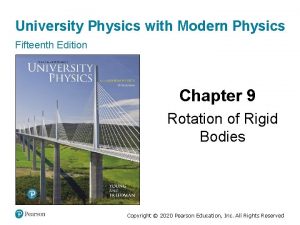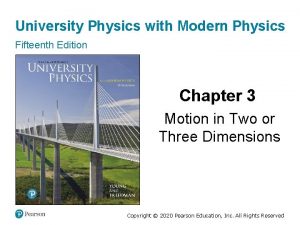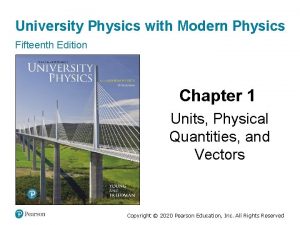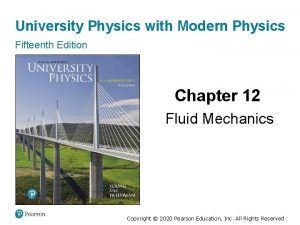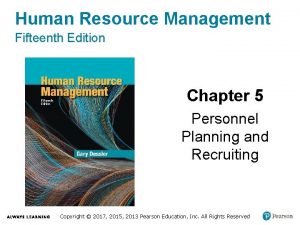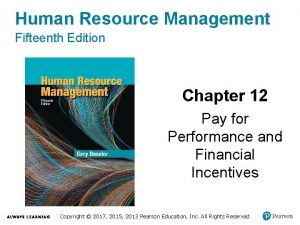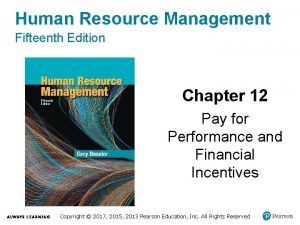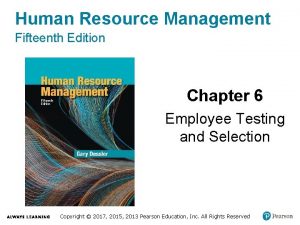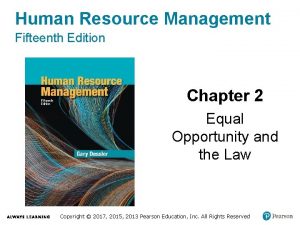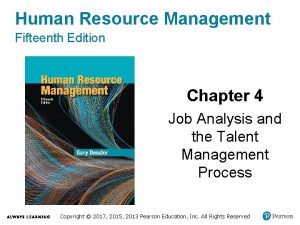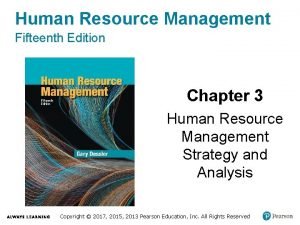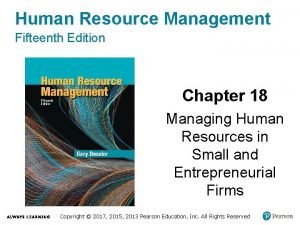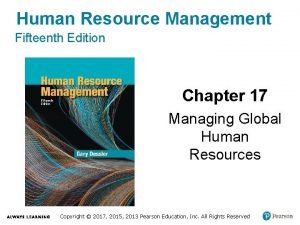University Physics with Modern Physics Fifteenth Edition Chapter






























- Slides: 30

University Physics with Modern Physics Fifteenth Edition Chapter 10 Dynamics of Rotational Motion Copyright © 2020 Pearson Education, Inc. All Rights Reserved

Learning Outcomes In this chapter, you’ll learn… • what is meant by the torque produced by a force. • how the net torque on an object affects the object’s rotational motion. • how to analyze the motion of an object that both rotates and moves as a whole through space. • how to solve problems that involve work and power for rotating objects. • how the angular momentum of an object can remain constant even if the object changes shape. Copyright © 2020 Pearson Education, Inc. All Rights Reserved

Introduction • These jugglers toss the pins so that they rotate in midair. • What does it take to start a stationary object rotating or to bring a spinning object to a halt? • We’ll introduce some new concepts, such as torque and angular momentum, to deepen our understanding of rotational motion. Copyright © 2020 Pearson Education, Inc. All Rights Reserved

Loosen a Bolt • Which of the three equal-magnitude forces in the figure is most likely to loosen the bolt? Copyright © 2020 Pearson Education, Inc. All Rights Reserved

Torque • The line of action of a force is the line along which the force vector lies. • The lever arm for a force is the perpendicular distance from O to the line of action of the force. • The torque of a force with respect to O is the product of the force and its lever arm. Copyright © 2020 Pearson Education, Inc. All Rights Reserved

Three Ways to Calculate Torque Copyright © 2020 Pearson Education, Inc. All Rights Reserved

Torque as a Vector • Torque can be expressed as a vector using the vector product. • If you curl the fingers of your right hand in the direction of the force around the rotation axis, your outstretched thumb points in the direction of the torque vector. • Video Tutor Solution: Example 10. 1 Copyright © 2020 Pearson Education, Inc. All Rights Reserved

Torque and Angular Acceleration for a Rigid Body • The rotational analog of Newton’s second law for a rigid body is: • Loosening or tightening a screw requires giving it an angular acceleration and hence applying a torque. Copyright © 2020 Pearson Education, Inc. All Rights Reserved

Why Only External Torques Affect a Rigid Body's Rotation • Any two particles in the object exert equal and opposite forces on each other. Copyright © 2020 Pearson Education, Inc. All Rights Reserved

Problem-Solving Strategy for Rotational Dynamics (1 of 2) • Identify the relevant concept: You must use • Set up the problem by using the following steps: 1. Sketch the situation and identify the object or objects to be analyzed. Indicate the rotation axis. 2. For each object, draw a free-body diagram that shows the object’s shape, including all dimensions and angles. Label pertinent quantities with algebraic symbols. 3. Choose coordinate axes for each body and indicate a positive sense of rotation (clockwise or counterclockwise) for each rotating object. If you know the sense of αz, pick that as the positive sense of rotation. Copyright © 2020 Pearson Education, Inc. All Rights Reserved

Problem-Solving Strategy for Rotational Dynamics (2 of 2) • Execute the solution as follows: 1. For each object, decide whether it undergoes translational motion, rotational motion, or both. Then apply Newton’s second law, or both to the object. 2. Express in algebraic form any geometrical relationships between the motions of two or more objects. An example is a string that unwinds, without slipping, from a pulley or a wheel that rolls without slipping. These relationships usually appear as relationships between linear and/or angular accelerations. 3. Ensure that you have as many independent equations as there are unknowns. Solve the equations to find the target variables. • Evaluate your answer. Copyright © 2020 Pearson Education, Inc. All Rights Reserved

Rigid Body Rotation About a Moving Axis (1 of 2) • The kinetic energy of a rotating and translating rigid body is Copyright © 2020 Pearson Education, Inc. All Rights Reserved

Rigid Body Rotation About a Moving Axis (2 of 2) Copyright © 2020 Pearson Education, Inc. All Rights Reserved

Rolling Without Slipping • The motion of a rolling wheel is the sum of the translational motion of the center of mass plus the rotational motion of the wheel around the center of mass. • The condition for rolling without slipping is Copyright © 2020 Pearson Education, Inc. All Rights Reserved

Combined Translation and Rotation • Airflow around the wing of a maple seed slows the falling seed to about 1 m/s and causes the seed to rotate about its center of mass. Copyright © 2020 Pearson Education, Inc. All Rights Reserved

Rolling with Slipping • The smoke rising from this drag racer’s rear tires shows that the tires are slipping on the road, so vcm is not equal to Rω. Copyright © 2020 Pearson Education, Inc. All Rights Reserved

Combined Translation and Rotation: Dynamics • The acceleration of the center of mass of a rigid body is: • The rotational motion about the center of mass is described by the rotational analog of Newton’s second law: • This is true as long as the axis through the center of mass is an axis of symmetry, and the axis does not change direction. Copyright © 2020 Pearson Education, Inc. All Rights Reserved

Rolling Friction • We can ignore rolling friction if both the rolling object and the surface over which it rolls are perfectly rigid. • If the surface or the rolling object deforms, mechanical energy can be lost, slowing the motion. • Video Tutor Solution: Example 10. 7 Copyright © 2020 Pearson Education, Inc. All Rights Reserved

Work in Rotational Motion • A tangential force applied to a rotating object does work on it. Copyright © 2020 Pearson Education, Inc. All Rights Reserved

Work and Power in Rotational Motion • The total work done on an object by the torque is equal to the change in rotational kinetic energy of the object, and the power due to a torque is: • When a helicopter’s main rotor is spinning at a constant rate, positive work is done on the rotor by the engine and negative work is done on it by air resistance. • Hence the net work being done is zero and the kinetic energy remains constant. Copyright © 2020 Pearson Education, Inc. All Rights Reserved

Angular Momentum (1 of 3) • To find the total angular momentum of a rigid body rotating with angular speed ω, first consider a thin slice of the object. • Each particle in the slice with mass mi has angular momentum: Copyright © 2020 Pearson Education, Inc. All Rights Reserved

Angular Momentum (2 of 3) • For a rigid body rotating around an axis of symmetry, the angular momentum is: • For any system of particles, the rate of change of the total angular momentum equals the sum of the torques of all forces acting on all the particles: Copyright © 2020 Pearson Education, Inc. All Rights Reserved

Angular Momentum (3 of 3) • The angular momentum of a rigid body rotating about a symmetry axis is parallel to the angular velocity and is given by Copyright © 2020 Pearson Education, Inc. All Rights Reserved

Conservation of Angular Momentum (1 of 2) • When the net external torque acting on a system is zero, the total angular momentum of the system is constant (conserved). • Video Tutor Demonstration: Spinning Person Drops Weight Copyright © 2020 Pearson Education, Inc. All Rights Reserved

Conservation of Angular Momentum (2 of 2) • A falling cat twists different parts of its body in different directions so that it lands feet first. At all times during this process the angular momentum of the cat as a whole remains zero. Copyright © 2020 Pearson Education, Inc. All Rights Reserved

Gyroscopes and Precession (1 of 3) • For a gyroscope, the axis of rotation changes direction. • The motion of this axis is called precession. Copyright © 2020 Pearson Education, Inc. All Rights Reserved

Gyroscopes and Precession (2 of 3) • If a flywheel is initially not spinning, its initial angular momentum is zero. Copyright © 2020 Pearson Education, Inc. All Rights Reserved

Gyroscopes and Precession (3 of 3) • In each successive time interval dt, the torque produces a change in the angular momentum in the same direction as the torque, and the flywheel axis falls. Copyright © 2020 Pearson Education, Inc. All Rights Reserved

A Rotating Flywheel (1 of 2) • This flywheel is initially spinning, with a large angular momentum. Copyright © 2020 Pearson Education, Inc. All Rights Reserved

A Rotating Flywheel (2 of 2) • Because the initial angular momentum is not zero, each change in angular momentum is perpendicular to the angular momentum. • As a result, the magnitude L remains the same but the angular momentum changes its direction continuously. Copyright © 2020 Pearson Education, Inc. All Rights Reserved
 University physics with modern physics fifteenth edition
University physics with modern physics fifteenth edition Performance appraisal in human resource management
Performance appraisal in human resource management Human resources department structure
Human resources department structure The worlds of the fifteenth century
The worlds of the fifteenth century Chapter 12 the worlds of the fifteenth century
Chapter 12 the worlds of the fifteenth century Classic menu sequence
Classic menu sequence Fifteenth amendment
Fifteenth amendment Why does it happen
Why does it happen Using mis (10th edition) 10th edition
Using mis (10th edition) 10th edition Mis
Mis Modern labor economics 12th edition solution
Modern labor economics 12th edition solution Vertical economics
Vertical economics Modern real estate practice in pennsylvania
Modern real estate practice in pennsylvania Modern database management 12th edition ppt
Modern database management 12th edition ppt Modern database management
Modern database management Modern operating systems 3rd edition
Modern operating systems 3rd edition Tanenbaum structured computer organization
Tanenbaum structured computer organization Modern database management 8th edition
Modern database management 8th edition Modern systems analysis and design 7th edition
Modern systems analysis and design 7th edition Modern database management solutions
Modern database management solutions Modern labor economics 12th edition
Modern labor economics 12th edition College physics explore and apply 2nd edition answers
College physics explore and apply 2nd edition answers Shapiro experiment
Shapiro experiment Document
Document Mark thomson modern particle physics
Mark thomson modern particle physics Modern physics introduction
Modern physics introduction Modern physics introduction
Modern physics introduction Modern physics introduction
Modern physics introduction Angle of banking
Angle of banking Physics
Physics 沈榮麟
沈榮麟



